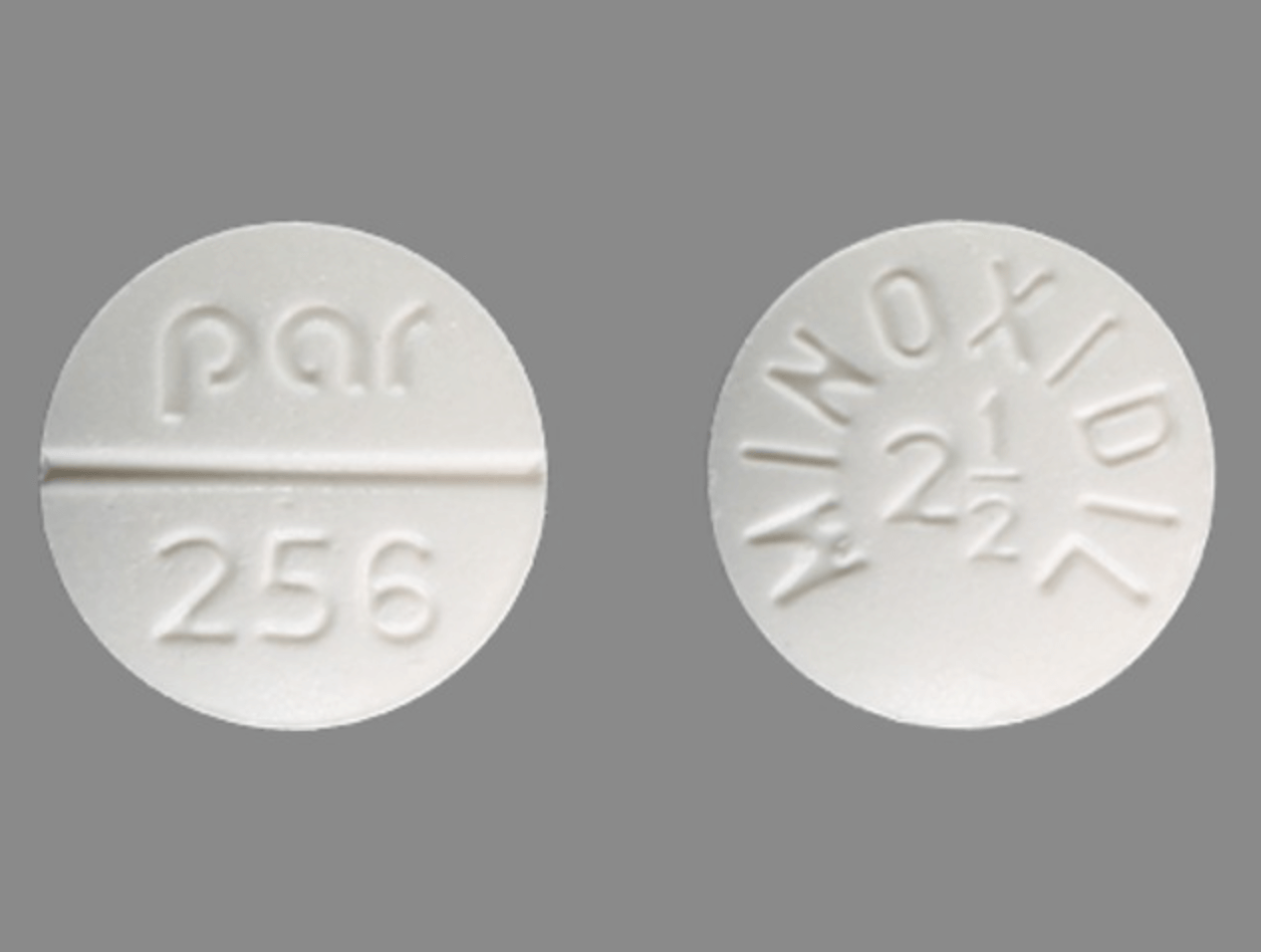Minoxidil is an oral medication that was initially FDA-approved in the 1970s to treat severe and treatment-resistant hypertension (high blood pressure). Doses used for the treatment of hypertension range between 10mg and 40mg daily. At these doses, patients who were taking minoxidil for blood pressure control were noted to have “hypertrichosis” or increased hair growth (as well as many other side effects). Minoxidil works to increase hair growth by causing a shortening of the telogen (resting) phase and lengthening of the anagen (growth) phase of the hair cycle, which increases the hair follicle diameter and length.
Topical versions of minoxidil (brand name: Rogaine) have been used for decades to help slow genetic thinning, but daily compliance with the application is a barrier to continued use and benefit. In addition, a substantial number of patients experience scalp irritation from the topical medication. More recently, low doses of oral minoxidil have been used “off-label” to help patients with androgenetic alopecia who prefer daily oral administration over topical application. The oral form should be more effective, but this has not yet been proven in controlled scientific studies.
Clinical experience suggests that oral minoxidil can be an effective treatment for male and female patients with androgenetic alopecia. Minoxidil doses used for hair loss are significantly lower than those used previously to treat hypertension. Most patients will tolerate the medication without major side effects.
The main reasons to consider oral minoxidil are:
- It is probably more effective than the topical formulation.
- When both forms of topical medication irritate the scalp and cannot be tolerated (i.e., the solution and occasionally the foam).
- When it is inconvenient or too messy to use the topical version. This is particularly important for women who wash their hair infrequently.
Women
For genetic thinning in women, we prescribe minoxidil in doses of 0.625mg (1/4 pill) or 1.25mg (1/2 pill). In addition, combination with 25mg spironolactone may increase the effectiveness and limit side effects by reducing fluid retention and facial hair growth that can be seen with minoxidil. Women who are pregnant, or are planning to get pregnant, should not take minoxidil or spironolactone.
Men
In men, we treat genetic thinning with 1.25mg (1/2 pill), 2.5mg (1 pill) or 5mg (2 pills) of oral minoxidil daily. Please remember that spironolactone is contraindicated in men, as it blocks the production of testosterone.
The most common side effect experienced with low-dose oral minoxidil is hypertrichosis (excess hair around the face and/or body). This hypertrichosis is often mild and manageable by most patients. Other less common side effects include dizziness or fainting (postural hypotension), lower limb swelling/edema, puffiness around the eyes, blood pressure and EKG changes. A rare complication, more likely seen at the higher doses used to control blood pressure, is fluid accumulation around the heart (pericardial effusion) or lungs. This may present as chest pain, chest tightness, or shortness of breath. The risk of side effects increases as the dose increases.
All patients taking oral minoxidil should tell the doctor if they have heart disease or blood pressure problems and if they are taking any medication for these conditions.
If the doctor recommends doing so, you should take oral minoxidil together with topical minoxidil to increase efficacy.
It takes oral minoxidil from 1 to 3 months to begin to work. Shedding may be noted during the first few months after starting therapy; therefore, you may not see any improvement for 6 months or more after beginning therapy. It is important not to discontinue the medication for this reason. The benefits of minoxidil will stop if the medication is discontinued. Over the two to six months following stopping, the hair loss pattern will return to the state that it would have been if the medication had never been used.





